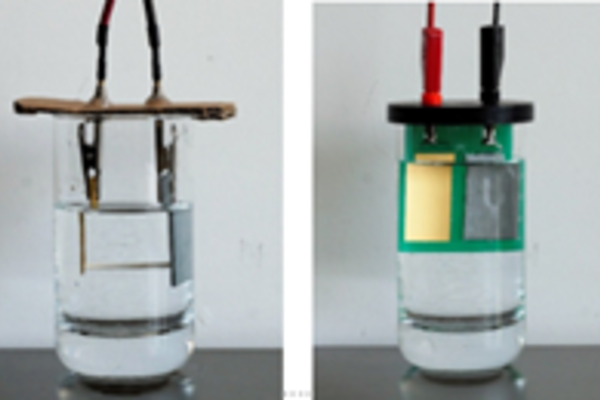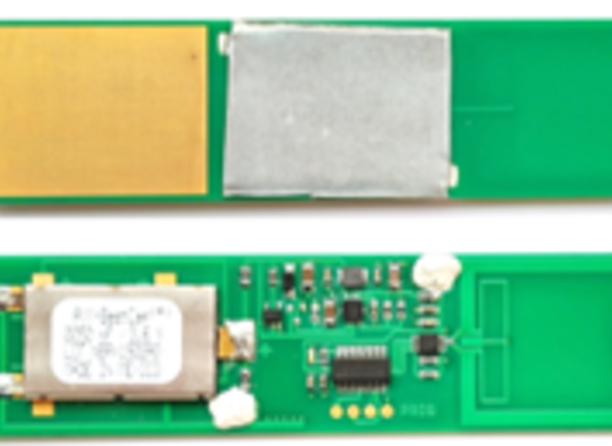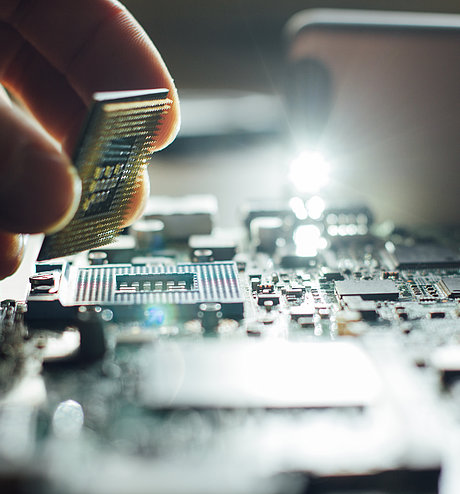Wireless water leakage detection - Energy-self-sufficient, maintenance-free sensor system
Ref.-No. 6391
Keywords: Wireless autonomous water sensor, Maintenance free, Inductive test of operation, Localization
There are more than one million incidents of piped water damage in Germany each year, accounting for claims of more than 3.3 billion euros to building and household goods insurers (as of 2020). An invention from Paderborn University can detect water leakage early on, greatly reducing the amount of damage. The inventors use a device for detecting moisture. A UHF antenna made of gold serves as the first electrode for the moisture sensor, a zinc electrode as the second. When there is moisture, current arises in the zinc/gold cell and is stepped up with a charge pump and stored in a capacitor. A transmitter with data storage then sends a signal to a receiver unit. What is special here is that the RFID antenna and the zinc/gold cell are arranged in parallel so that the sensor sends a signal when it detects moisture, and the sensor system actively controls the RFID antenna and thus localizes and identifies that moisture. Another decisive advantage the system has over battery-powered ones is its much longer storage and usage time (more than ten years). After the galvanic cell is activated (contact is made between the electrodes and water), corrosion of the metal electrodes limits service life; depending on the conditions under which the cell operates, service life is then several days or a few weeks. The resulting electrical power is easy to scale by adjusting the size of the electrodes and the energy storage. A cell of a few square centimeters generates enough energy to collect three to five data packages in sequence in a few minutes. The sensor PCB that has been developed has no external sensors and transmits only the individual ID number when there is contact with water.
Competitive Advantages
- Battery-free sensor system
- Autonomous, battery-free sensor
- Very long service life
- Sensor system localization
Commercial Opportunities
The sensor system described here can be used continuously to detect water leakage in buildings (bathrooms, heating rooms, sanitary facilities, etc.). It allows constant, maintenance-free monitoring of bathroom seals, washing machines, basement areas, and all types of water-bearing pipes and hoses. It does so safely, reliably, and at little cost, reducing water damage in the building infrastructure.
Current Status
Initial laboratory samples of the sensor system have been created, and test series have verified process functionality. It has been registered with the German Patent and Trade Mark Office. It can be registered in other countries in the priority year or upon later PCT registration. We are offering interested companies the opportunity to license and refine the technology in collaboration with the inventors and Paderborn University.
Technology Readiness Level
1
2
3
4
5
6
7
8
9
Technology validated in lab
Relevant Puclications
Petrov, D.; Hilleringmann U.; Water-Based Primary Cell for Powering of Wireless Sensors, IEEE Sensors 2020, Rotterdam, DOI:10.1109/SENSORS47125.2020.9278891
—
An invention of Paderborn University.




